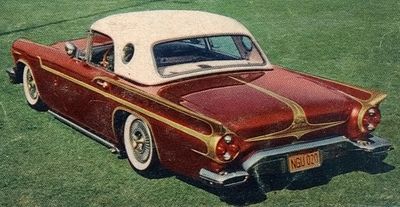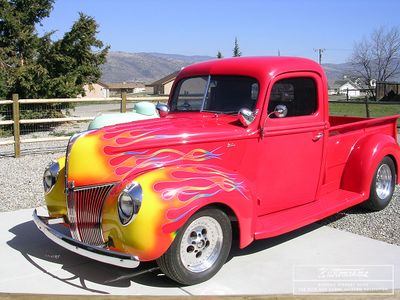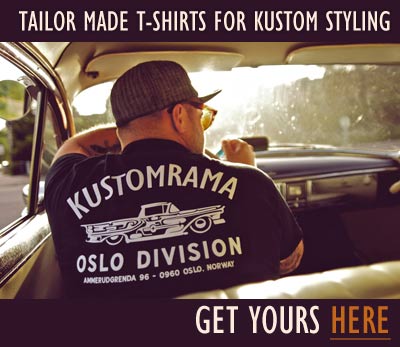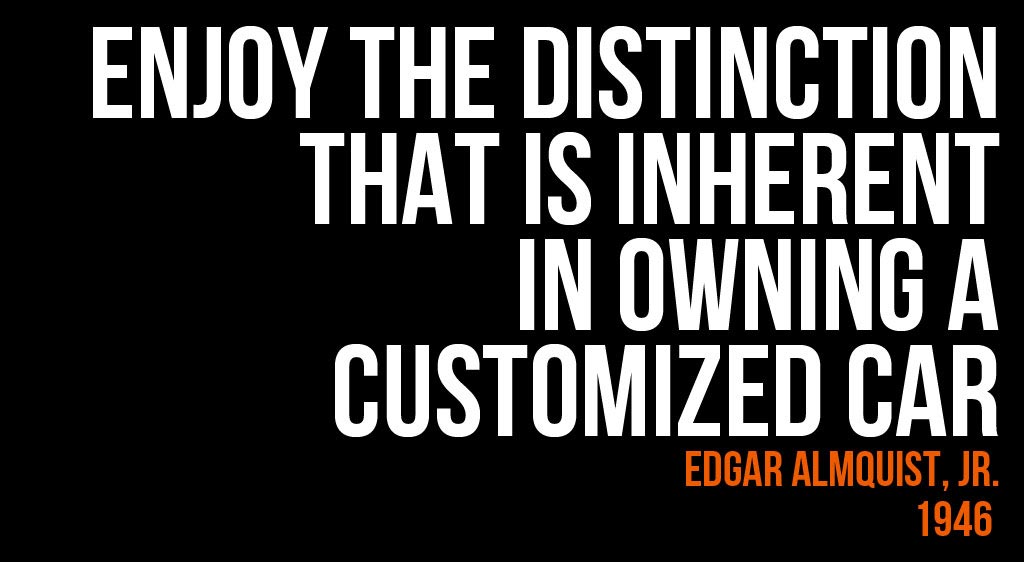Dick Jackson
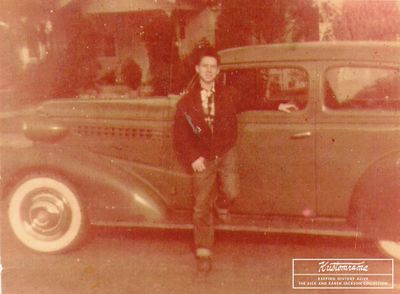
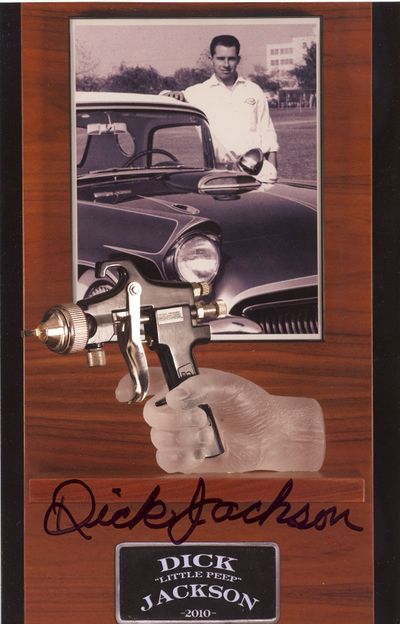
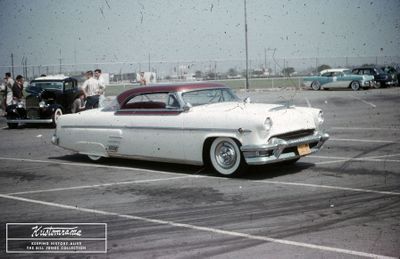

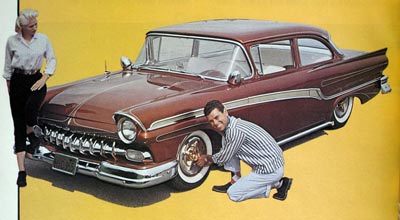
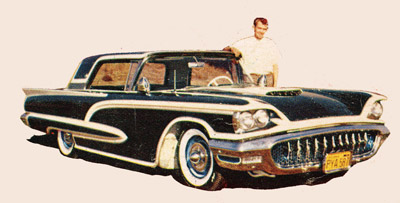
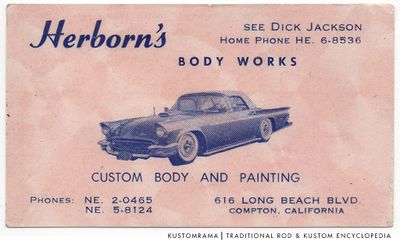
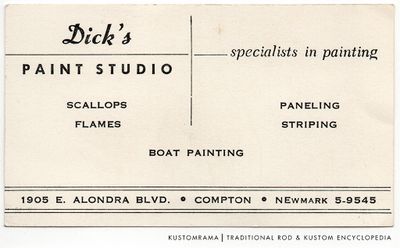
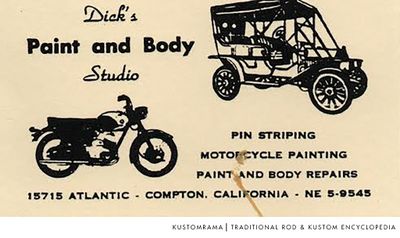
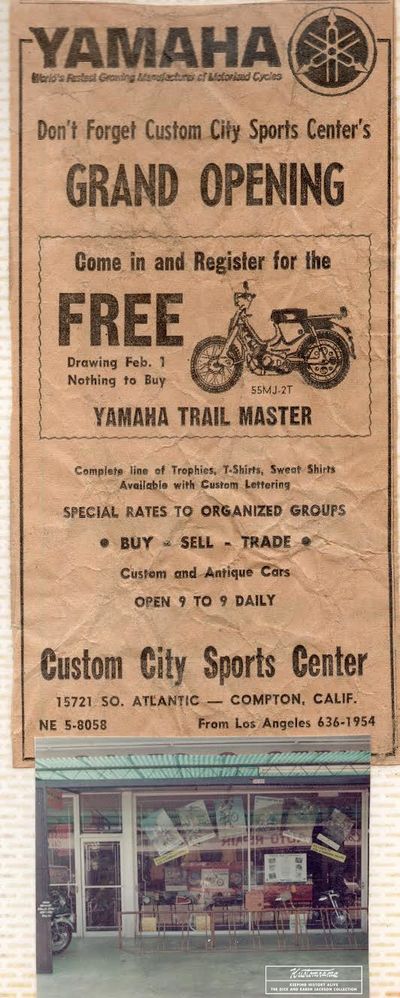
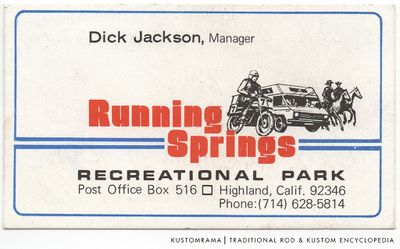
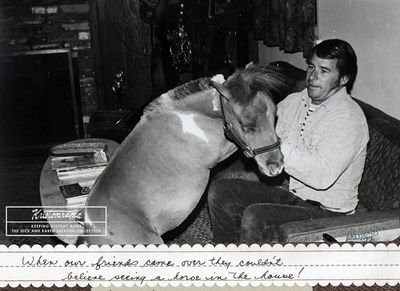
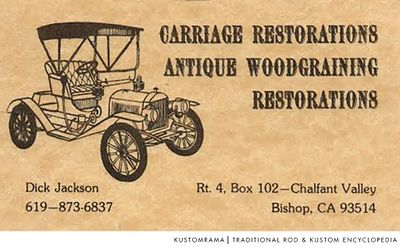
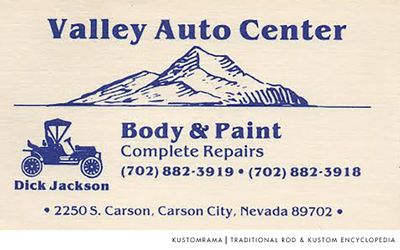
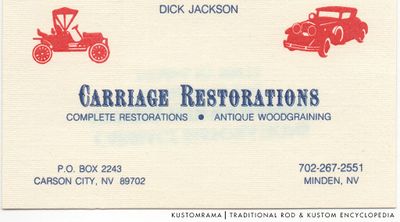
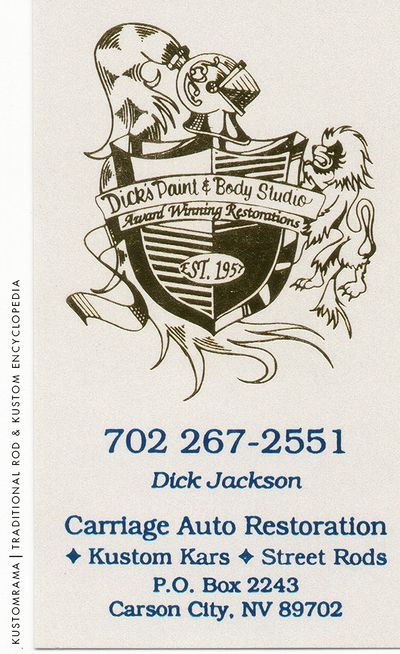
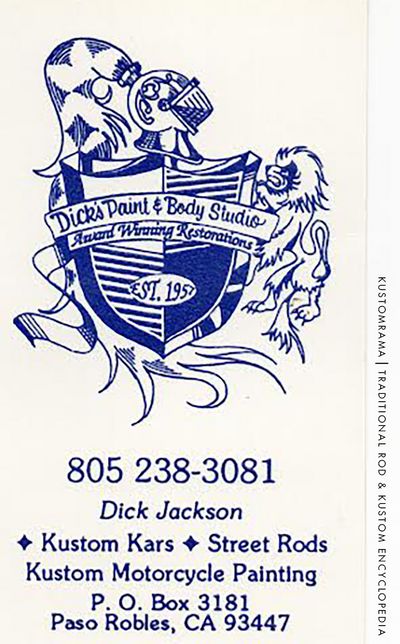
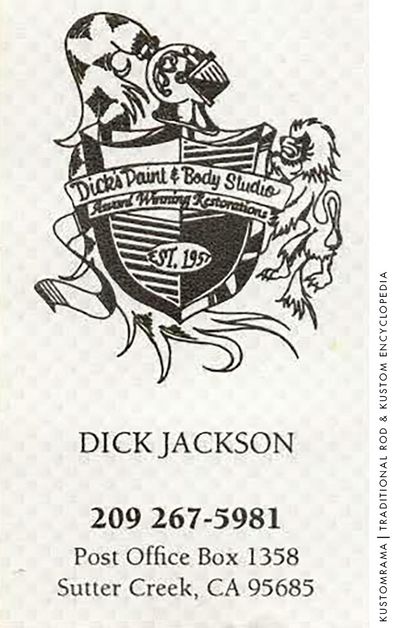
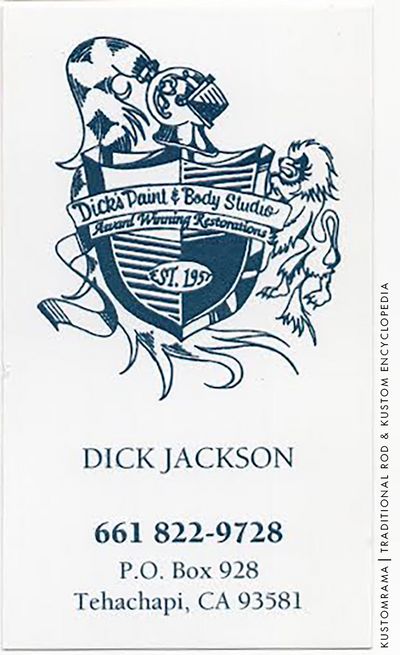
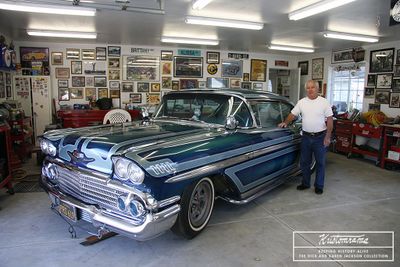
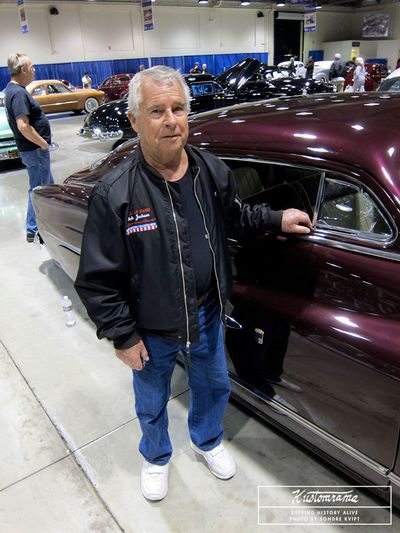
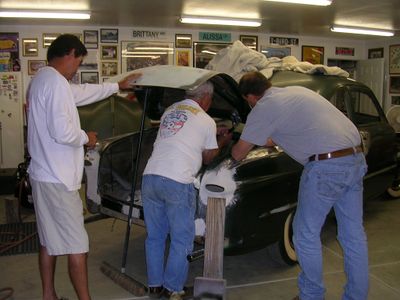
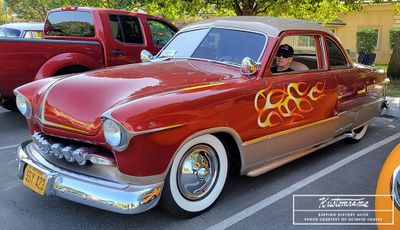
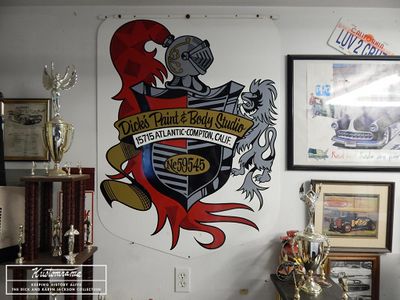
Richard Lee Jackson (01.07.1934 - 05.02.2023) was born in Long Beach, California in 1934. From his humble beginnings sweeping floors at Barris Kustoms to becoming the head painter and eventually opening his own shop, Peep's contributions to the industry will forever be remembered.
Contents
Broom Boy at Barris Kustoms
Dick grew up in Lynwood and began hanging around the Barris Kustoms shop at age 14, in 1949. He had a Whizzer bike and used to stop by the shop every day on the way home from school. A rope kept visitors out of the shop, so the workers would not be disturbed by curious by-passers. Dick used to stand outside the rope and stare into the shop. One day Sam said, "Hey, we're getting tired of you staring at us. You want a job here?" At the time, the Manok brothers, John and Ralph, worked there along with Bill Ortega and Sam and George. Dick said yes, and he started to sweep the floors. He was told not to sweep any tools or parts. Dick wasn't paid, but he felt lucky to be on the other side of the rope. While working at the shop, George gave Dick the nickname "Peep," telling him, "You're only a peep." After six months, Sam told Peep that he was doing a good job and that they would start paying him 22 cents an hour. He took parts off and put parts to be used in one pile, another in the shed up front, and on the other side. Peep advanced from being a broom boy to becoming the spotlight guy. When George got tired of installing spotlights, he passed the task on to Peep.[1]
First Car
Peep was still going to school. He had a paper route in the morning and lived at home. He was learning at the shop. He became good friends with Sam, who told him more about what to do than George, and he was even his babysitter when he and his wife wanted to go to a show. Peep would watch the two kids as a favor, and Sam would do favors for Peep. Peep's first car was a 1938 Chevrolet Sedan, a pretty, clean, and stock car. The first thing Sam told Dick was that he had to put some primer spots on it to make it look like it belonged at the shop. Next, he gave Peep a complete set of Cadillac Sombreros, telling him that he needed those. They found a way to screw them on before Sam told Peep they had to lower the car. Sam gave Peep blocks for the back, and they figured out how to lower the knee action in front. Finally, he came in with a new set of original teardrop skirts for the car. At the time, Sam was teaching Peep how to sand and mask. They were taking him through phases, and Peep did a lot of block sanding on the Hirohata Merc. The first thing he ever painted on a car was the dashboard and steering column on Bob Hirohata's 1951 Mercury. By 1952, he was learning how to weld. George had strict rules; one of these was that all seams had to be fully welded or brazed, not tacked, before leading, so they wouldn't crack later. Back then, they did most everything in brazing, and the welding they did was done with coat hangers as the metal was softer and it flowed easier, almost like lead.[2]
Hanging Out With the Cool Kids
Working at Barris Kustoms, Peep had the chance to hang out with his heroes such as Johnny Zaro, Jesse Lopez, Bob Hirohata, Frank Monteleone and Nick Matranga. Being employed at Barris Kustoms made you stand tall with your high school buddies. Not only did Peep hang out with these cool guys, but he could also drive their custom cars. While Sam Barris' 1949 Mercury was under construction, Sam would sometimes say, "Take it to school if you want to go look for girls."[3]
Moving On Up
As Peep started making more money, he bought a 1952 Ford. He started working on it in the shop, and he remembers that you could always work on your own car in the shop after hours. Everybody did. Sometimes on Saturday, payday, George would be short of money, and he told Peep that they were even as he had used some primer and some paper. If George wouldn't pay him, and he was short of money that week, he would go work somewhere else. If Sam heard about it, that he had been working for George Cerny at Cerny's Custom Shop, he would get in Peep's face and kick him out, telling him not to work for the competition. "You are loyal to us," Sam told him. Both Sam and George had a temper. Sam wasn't quite as bad as George. Peep remembered that if you heard George started cussin' and yellin', everybody in the shop would duck for the floor. In the mid 1950s, Peep started working other places as well. He would work for shops that paid better, then come back at night and work but take it out in trade for working on his own car. When he finally was the head painter at Barris Kustoms, full time, he had around $2.45 an hour. This was just before the fire in 1957. He had his 1957 Thunderbird then. He left Barris not long after the fire, in 1958, to start his own shop, a body shop and custom car studio called Dick's Paint and Body Studio in Compton. Dick was typical of most employees at Barris at the time, both in coming and going and working after hours or part-time.[2]
In 1957, Peep bought a brand new 1957 Ford that he customized. Later the same year, he traded the Ford to Buddy Alcorn for his chopped 1950 Mercury. He updated the Merc with a pinstriped two-tone paint scheme, dual spotlights, and Oldsmobile Fiesta hubcaps before he sold it to buy a 1957 Ford Thunderbird.[3]
The Inventor of Dummy Spotlights and Sattel-Lites Taillights
Dick was the inventor of fake spotlights, or "dummy spots." He acquired a set of real Appleton spotlights from a wrecked custom. The shafts were broken. However, the mounting base was still intact. From this, Dick got the idea to use them on a car without drilling the hole for the shaft, but only mounting just the spotlights. He sold the rights to Alex Kraus of Cal Custom for $100.[4] Another design Dick sold to Cal Custom was the Sattel-Lites for 1957 Ford's. The Sattel-Lites were based on the lights Dick made for his Thunderbird. Dick got another $100 for the design, and Alex Kraus produced and sold hundreds of sets.[3]
Moving Away from Compton
In the 1960s, Compton began to change. As gangs and crime spread through the area, it became increasingly difficult to run a business there. In 1967, Dick’s beloved Dick's Paint & Body Studio was burned down, a devastating loss that marked the end of an era for him.[5]
After the fire, Dick and Karen began a new chapter that would take them across several towns and states. Around 1969, Dick put custom cars aside for a few years when he was offered a management position at Chino Ranch, a 360-acre property in Southern California. There, he raised Lilliputian Miniature Horses and enjoyed a quieter life until 1973.[6]
By [[1980], Dick had relocated north to Chalfant Valley near Bishop, California, where he opened Carriage Restorations, specializing in antique carriage and woodgraining work. He and Karen created the business card together, and Dick continued using his distinctive crest logo, first introduced in the 1950s, for decades to come.[6]
In 1983, they moved to Minden, Nevada, where Dick opened Valley Auto Center while continuing to operate Carriage Restorations for another ten years. His dedication to craftsmanship never wavered, and he continued to balance repair work, restoration projects, and custom paint jobs.[6]
The journey continued in 1992–93, when Dick and Karen moved back to California, settling in Paso Robles. There, Dick revived the Dick's Paint & Body Studio name once again, operating for nearly nine years before moving north to Sutter Creek, in California’s historic 1849 Gold Country, where they spent two years.[6]
Eventually, they returned to Paso Robles for another short stay before making their final move to Tehachapi, California, around 2008. There, Dick continued to work under the Dick's Paint & Body Studio banner, staying true to his lifelong passion for painting, restoration, and craftsmanship until his later years.[6]
Dick passed away on May 05, 2023. At the time, he had two daughters, seven grandchildren, and five great-grandchildren.[5]
Dick Jackson's Cars
Dick Jackson's 1938 Chevrolet Sedan
Dick Jackson's 1940 Ford Pick Up
Dick Jackson's 1941 Ford Coupe
Dick Jackson's 1949 Ford
Buddy Alcorn's 1950 Mercury
Ron Dragoo's 1951 Mercury Coupe
Dick Jackson's 1952 Ford
Dick Jackson's 1953 Studebaker
Dick Jackson's 1954 Mercury
Dick Jackson's 1957 Ford
Dick Jackson's 1957 Ford Thunderbird
Dick Jackson's 1958 Ford Thunderbird
Cars Restyled by Dick Jackson
Click here to see cars restyled by Dick Jackson at Advanced Custom Paints
References
Did you enjoy this article?
Kustomrama is an encyclopedia dedicated to preserve, share and protect traditional hot rod and custom car history from all over the world.
- Help us keep history alive. For as little as 2.99 USD a month you can become a monthly supporter. Click here to learn more.
- Subscribe to our free newsletter and receive regular updates and stories from Kustomrama.
- Do you know someone who would enjoy this article? Click here to forward it.
Can you help us make this article better?
Please get in touch with us at mail@kustomrama.com if you have additional information or photos to share about Dick Jackson.
This article was made possible by:
SunTec Auto Glass - Auto Glass Services on Vintage and Classic Cars
Finding a replacement windshield, back or side glass can be a difficult task when restoring your vintage or custom classic car. It doesn't have to be though now with auto glass specialist companies like www.suntecautoglass.com. They can source OEM or OEM-equivalent glass for older makes/models; which will ensure a proper fit every time. Check them out for more details!
Do you want to see your company here? Click here for more info about how you can advertise your business on Kustomrama.

